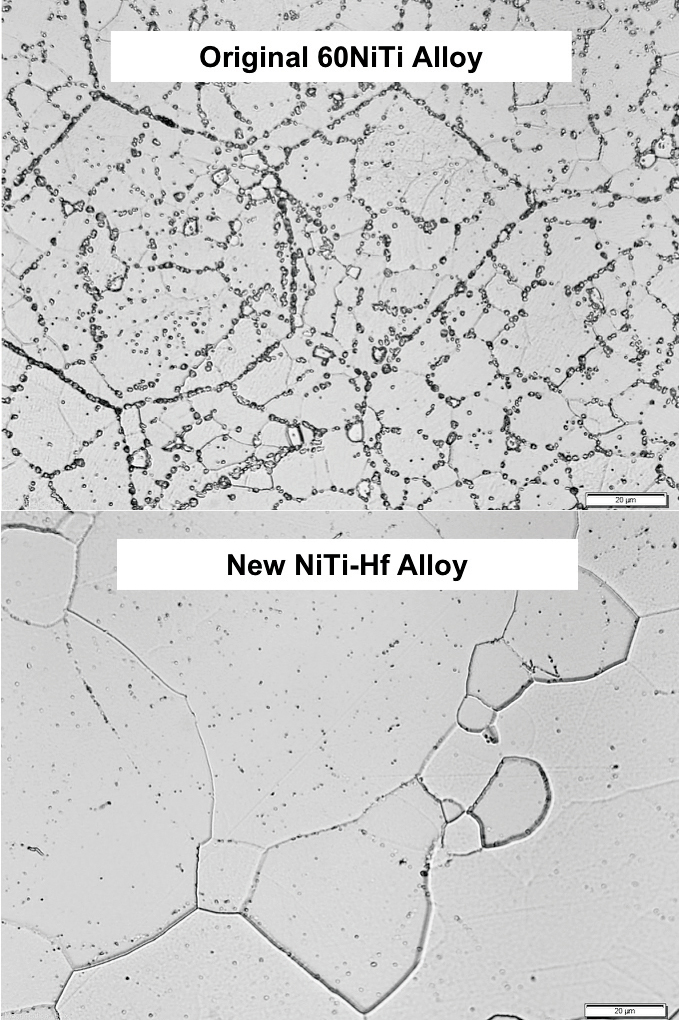Download PDF: NiTi-Hf Alloy for Corrosion Immune, Shockproof Bearings
NASA has developed a new ball bearing material, Nickel Titanium-Hafnium (NiTi-Hf), to replace 60NiTi in many flight applications. In 2011, to overcome recurrent ball bearing problems in the ISS wastewater treatment system, the NESC initiated an assessment (NASA/TP-2013-218085) of an emerging new technology based on NiTi materials. The target application was the 50mm bore centrifuge bearings that support the rotating drum of the urine processor distillation assembly. That assessment resulted in the design, manufacture, and testing of corrosion-immune, shock-load tolerant ball bearings made from the original baseline alloy 60NiTi. Bearings made from this alloy performed acceptably but were difficult to manufacture and required an extreme heat treatment to achieve high hardness. The heat treatment included rapidly quenching red-hot parts in cold water. Though the resulting bearing parts attained high hardness, the residual thermal stresses sometimes led to distortion and cracking. While the 60NiTi bearings passed ground tests and are slated for flight, room for materials improvements and follow-on research was apparent.
60NiTi is a close materials cousin to NiTi shape memory alloys. The primary difference is that for bearing use, the composition is always nickel rich: the amount (atomic percentage) of nickel exceeds the amount of titanium by a few percent. This ratio leads to high hardness and eliminates the dimensional instabilities exhibited by shape memory alloys that contain equal amounts of Ni and Ti. By borrowing select alloying concepts from the shape memory community, NESC-funded researchers identified several compositional additions (e.g., Zr, Hf, Ta) with the potential of improving processing and performance attributes. Since compositional dopants in shape memory alloys alter phase transition temperature, researchers hoped new, more complex bearing alloy compositions might offer a path towards more thermally benign heat treatments with commensurately fewer residual thermal stress challenges.
A new NiTi alloy containing 1 atomic percent (~3.9% by weight) Hf, designated NiTi-Hf, has been shown to achieve high hardness even without resorting to a rapid water quench heat treatment. Further, the Hf addition works as a trap for trace amounts of oxygen yielding finer and more homogenous microstructures with better rolling contact fatigue behavior than the baseline 60NiTi alloy (Figure 1).
Recently, new flight bearings made with the NiTi-Hf alloy have been produced and have passed long-term 5000-hour ground tests, a prerequisite for flight use (Figure 2). Based on the benefits to performance and processability afforded by the new composition, NASA plans to phase out the use of 60NiTi in favor of NiTi-Hf. Work is also underway to extend the materials and processing specification for 60NiTi
(MSFC-SPEC-3706) to encompass the new alloy. The rapid progress achieved has greatly aided the commercialization of the technology, which is already available from at least two major bearing companies.
For more information, contact:
Dr. Christopher DellaCorte, GRC, christopher.dellacorte@nasa.gov




























